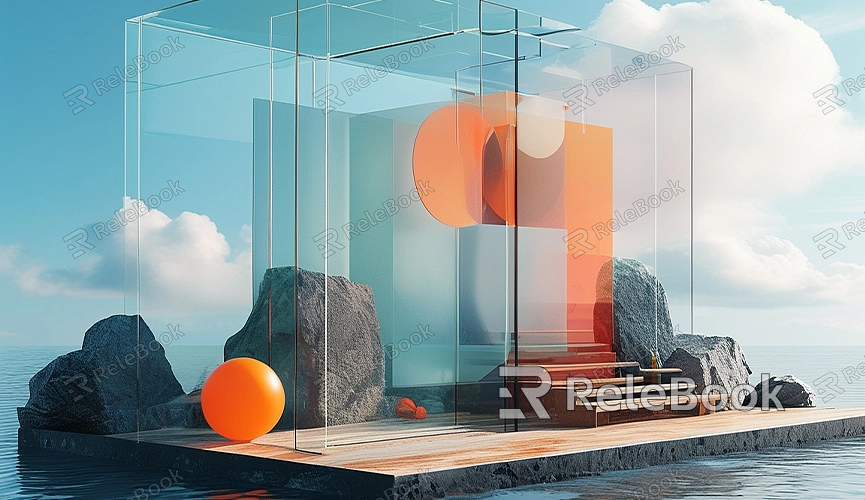How to Render Cycles Really Quickly in Blender
Blender, as a free and open-source 3D modeling and rendering software, is widely used across various creative fields. Its Cycles rendering engine is particularly popular among designers and artists for its high-quality, physically accurate renderings. However, Cycles’ high-quality rendering can lead to long render times, especially with complex scenes, making the wait challenging. So, is there a way to speed up Cycles rendering without sacrificing too much quality? The answer is yes. This article will share some tips to significantly accelerate Cycles rendering speed in Blender.

Optimize Sampling Settings
Sampling values determine how many times each pixel is calculated during rendering. Higher sampling values result in better quality but also increase render times. Finding a balance between speed and quality is key to speeding up rendering.
1. Reduce Sampling Count: In the “Render Settings” tab, find the “Sampling” option and adjust the default sampling value according to the complexity of your scene. For previews or draft renders, you can lower the sampling value to between 50 and 100, which can greatly reduce render times.
2. Enable Adaptive Sampling: Adaptive sampling adjusts the sampling rate automatically, reducing computation in areas that do not require high precision. You can enable this option in the “Sampling” settings.
Use GPU Rendering
Compared to CPUs, GPUs excel in parallel processing, making them much faster for rendering tasks.
1. Enable GPU Rendering: In Blender’s “User Preferences” menu, go to the “System” tab, select your GPU device, and switch the rendering device to “GPU Compute.”
2. Optimize GPU Usage: If your scene is very complex, further optimize GPU usage by reducing memory consumption to prevent the GPU from becoming inefficient due to lack of memory.
Use Denoising Features
Blender’s denoising feature can produce smoother images with lower sampling counts, significantly reducing rendering times. The denoiser automatically removes noise from images, making low-sample renders look closer to high-sample quality.
1. Enable Denoiser: In the render settings, find the “Denoising” option and enable it. The denoiser will process the image after rendering to reduce noise.
2. Use Viewport Denoising: Besides using the denoiser in the final render, you can enable denoising in viewport renders for faster previews of near-final results.
Simplify Scene and Lighting

Complex scenes and lighting setups can greatly increase render times. Aim to avoid overcomplicating these aspects during design.
1. Reduce Polygon Count: Minimize unnecessary details and polygon count. For background elements, use low-poly models or textures instead of detailed 3D models.
2. Optimize Lighting Setup: Reduce the number of lights, especially volumetric lights and indirect lighting effects. Simple lights like parallel lights and point lights can effectively reduce computation.
Use Proxies and Simplified Models
For very complex scenes, consider using proxies or simplified models during rendering. Proxies replace high-resolution objects with simplified versions, reducing computation.
1. Create Proxies: In Blender, use simplified or low-resolution versions of models as proxies for rendering, and switch to high-resolution versions for the final render.
2. Level of Detail (LOD): For scenes with objects at various distances, set different LODs for each object. Use simplified models for distant objects and keep high-resolution for close ones.
Use Tile Rendering
Blender’s tile rendering feature divides the rendering task into smaller chunks, rendering each chunk independently and then combining them into the final image. Properly setting tile sizes can speed up rendering.
1. Adjust Tile Size: In the render settings, adjust the tile size. For GPU rendering, larger tiles are usually more efficient, while for CPU rendering, smaller tiles are often more suitable.
By applying these optimization techniques, you can significantly speed up Cycles rendering in Blender without drastically compromising quality. Properly adjusting sampling, using GPU rendering, enabling denoising, simplifying scenes, and utilizing tile rendering are all effective ways to save time on your projects. If you need high-quality 3D textures and HDRIs for creating models and virtual scenes, you can download them for free from [Relebook](https://textures.relebook.com/). For exquisite 3D models, visit [Relebook](https://3dmodels.relebook.com/) for a wide selection of premium 3D resources.

